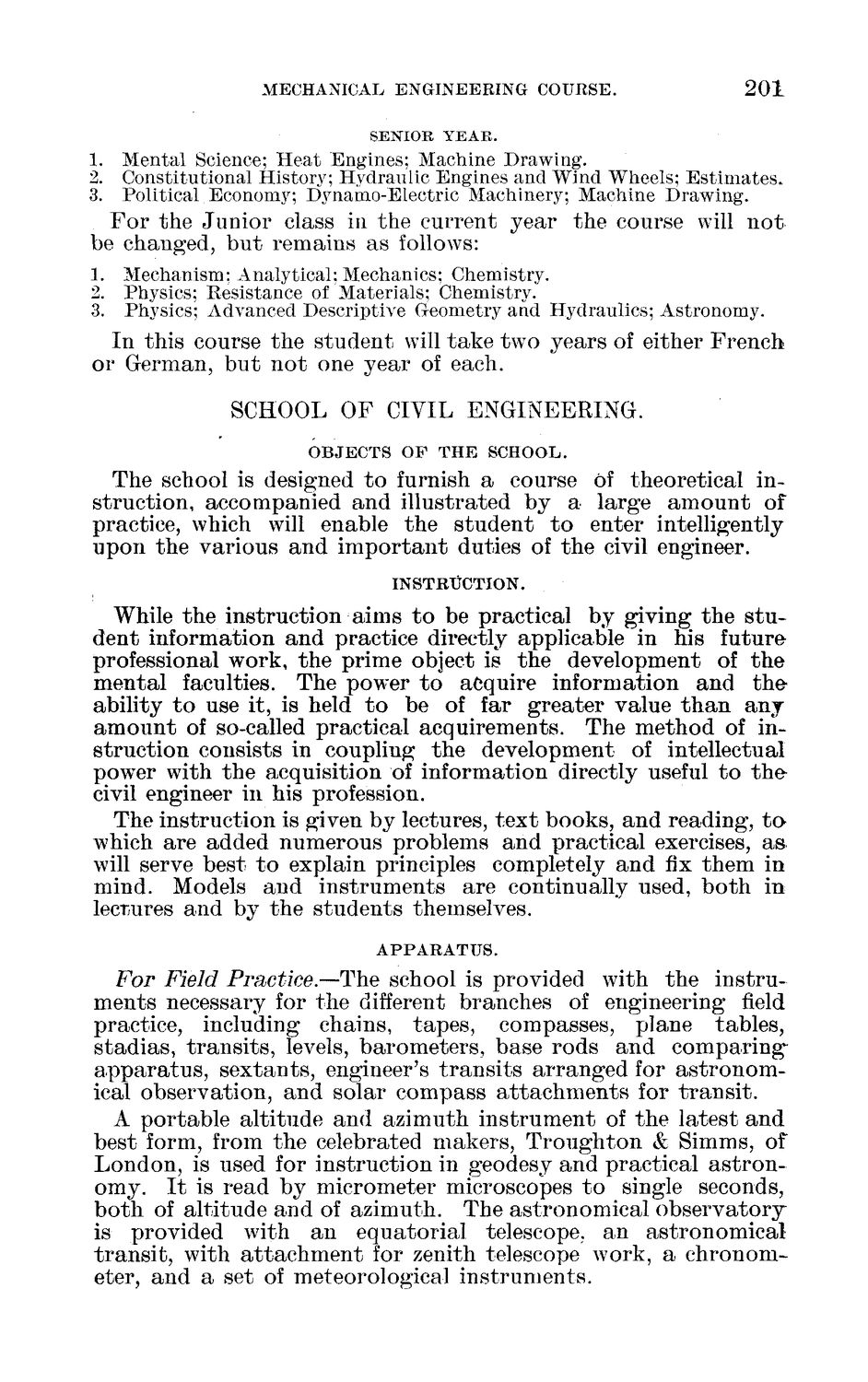| |
| |
Caption: Board of Trustees Minutes - 1890
This is a reduced-resolution page image for fast online browsing.

EXTRACTED TEXT FROM PAGE:
MECHANICAL ENGINEERING COURSE. SENIOR Y E A R . 201 1. Mental Science; Heat Engines: Machine Drawing. 2. Constitutional History; Hydraulic Engines and Wind Wheels; Estimates. 3. Political Economy; Dynamo-Electric Machinery; Machine Drawing. F o r the Junior class in the current year the course will n o t be changed, b u t remains as follows: 1. Mechanism; Analytical; Mechanics; Chemistry. 2. Physics; Eesistance of Materials; Chemistry. 3. Physics; Advanced Descriptive Geometry and Hydraulics; Astronomy. In this course the student will t a k e two years of either French or German, b u t n o t one year of each. SCHOOL OF CIVIL ENGINEERING. OBJECTS OF THE SCHOOL. The school is designed t o furnish a course of theoretical instruction, accompanied and illustrated by a large a m o u n t of practice, which will enable the student t o enter intelligently upon the various and i m p o r t a n t duties of the civil engineer. INSTRUCTION. While the instruction aims t o be practical by giving the s t u dent information and practice directly applicable in his future professional work, the prime object is the development of t h e mental faculties. The power t o acquire information and theability t o use it, is held t o be of far greater value t h a n any a m o u n t of so-called practical acquirements. The method of instruction consists in coupling t h e development of intellectual powTer with t h e acquisition of information directly useful t o thecivil engineer in his profession. The instruction is given by lectures, t e x t books, and reading, t a which are added numerous problems and practical exercises, a s will serve best t o explain principles completely and fix them in mind. Models and instruments are continually used, b o t h in lectures and by the students themselves. APPARATUS. For Field Practice.—The school is provided with the instruments necessary for the different branches of engineering field practice, including chains, tapes, compasses, plane tables, stadias, t r a n s i t s , levels, barometers, base rods a n d c o m p a r i n g a p p a r a t u s , sextants, engineer's t r a n s i t s arranged for a s t r o n o m ical observation, and solar compass a t t a c h m e n t s for t r a n s i t . A portable altitude and azimuth instrument of t h e latest and best form, from the celebrated makers, T r o u g h t o n & Simms, of London, is used for instruction in geodesy and practical a s t r o n omy. I t is read by micrometer microscopes t o single seconds, b o t h of altitude and of azimuth. The astronomical o b s e r v a t o r y is provided with an equatorial telescope, an astronomical t r a n s i t , with a t t a c h m e n t for zenith telescope work, a chronometer, and a set of meteorological instruments.
| |